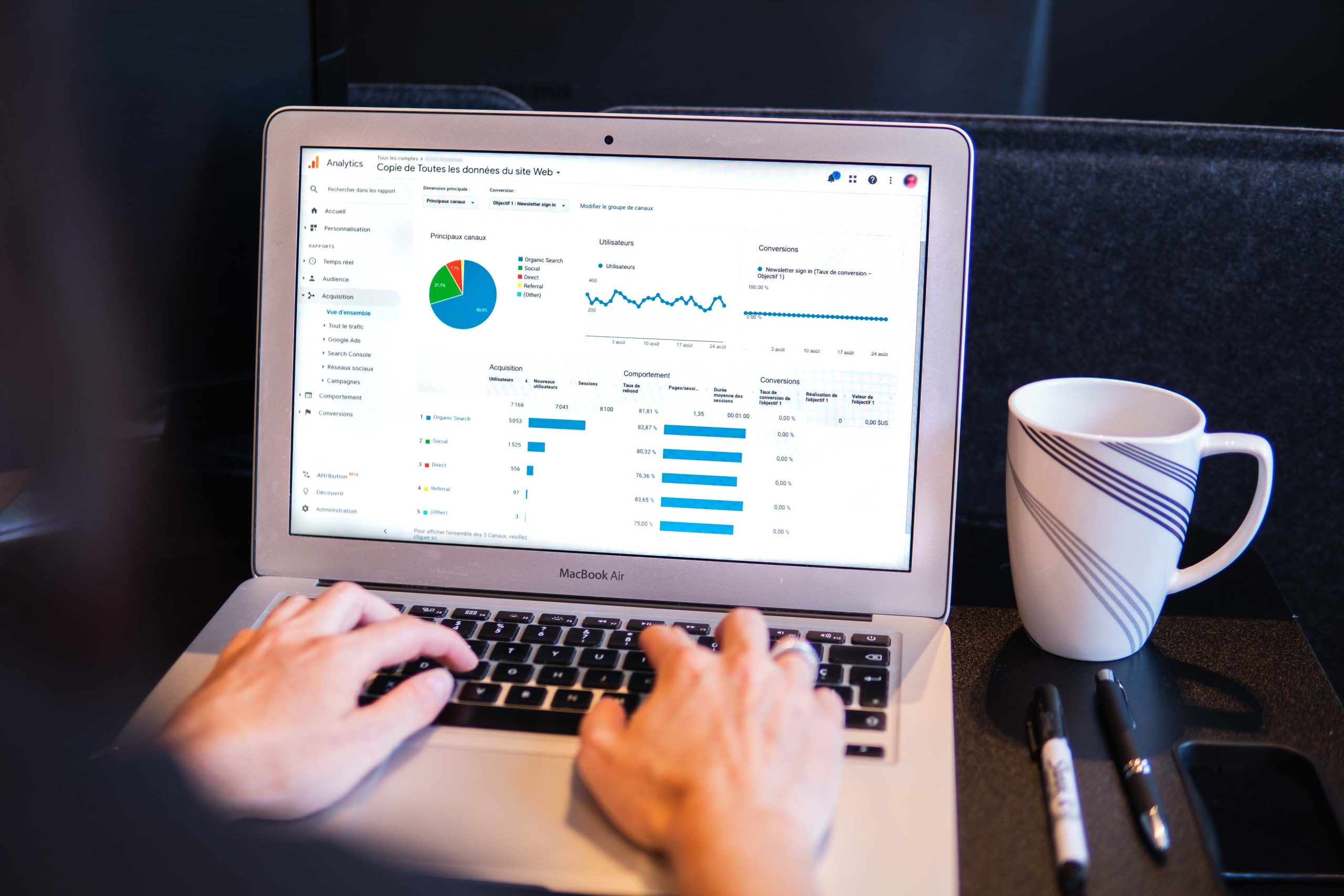Full funnel attribution in data analytics: unlocking insights and maximizing impact
Navigating the Sales Funnel: Applying Full Funnel Attribution for Optimal ROI
- 10 minutes to read
In the era of Big Data, businesses are inundated with vast amounts of information from multiple sources. This deluge of data provides unprecedented opportunities to understand customer behavior and optimize marketing strategies. However, without proper data analytics and attribution methodologies, this wealth of information has untapped potential.
Full Funnel Attribution, a comprehensive approach to tracking customer interactions across the entire sales funnel, emerges as a game-changer in the world of data analytics. This article delves into the significance of Full Funnel Attribution, its implementation, and its transformative impact on businesses.
Understanding the Full Funnel Attribution Concept
Full Funnel Attribution encompasses attributing various marketing touchpoints to specific stages of the customer journey. Unlike traditional single-touch attribution models that assign all credit to the first or last interaction, Full Funnel Attribution analyzes the entire customer path. This enables marketers to gain valuable insights into how different marketing channels and efforts work together to drive conversions.
The core objective of Full Funnel Attribution is to paint a complete picture of customer behavior, identifying which marketing channels and tactics contribute most to lead generation, conversion, and ultimately, revenue generation. By analyzing the customer journey holistically, businesses can make informed decisions and allocate their marketing budgets more effectively.
Challenges in Implementing Full Funnel Attribution
Implementing Full Funnel Attribution is not without its challenges. One of the primary difficulties lies in data integration. With data originating from various sources, such as social media platforms, email campaigns, website analytics, and offline interactions, consolidating this information can be a daunting task. However, advancements in data analytics technologies and cloud-based solutions have facilitated smoother integration processes.
When it comes to Digital Marketing, NeoPerfomance has the ideal solution for working with the data generated at every stage of the funnel. Neodash is our innovative SaaS (Software as a Service) platform, driven by cutting-edge technology and AI (Artificial Intelligence)-guided insights. With NeoDash, we collect, model, persist and present data to you automatically, integrating it with the main media channels and CRM systems. Therefore, we facilitate data analysis and the application of full-funnel marketing to your strategy.
Another hurdle is data accuracy and completeness. Inaccurate or incomplete data can lead to erroneous conclusions and misguided marketing strategies. Data cleansing and validation procedures are essential to ensure that the insights derived from Full Funnel Attribution are reliable and actionable.
Key Components of Full Funnel Attribution
A. Multi-Touch Attribution Models:
Multi-Touch Attribution models are at the heart of Full Funnel Attribution. These models assign credit to various touchpoints along the customer journey, considering both online and offline interactions. Commonly used Multi-Touch Attribution models include:
- Linear Attribution: Equally distributes credit among all touchpoints in the customer journey.
- Time Decay Attribution: Gives more weight to touchpoints closer to the conversion event.
- U-Shaped Attribution (or Position-Based Attribution): Assigns higher credit to the first and last touchpoints, with the remaining distributed among intermediate interactions.
- Algorithmic Attribution: Utilizes machine learning algorithms to assign credits based on data patterns and historical performance.
B. Customer Journey Mapping:
Understanding the customer journey is vital for Full Funnel Attribution. Customer journey mapping involves visualizing the various stages a customer goes through, from initial awareness to post-purchase engagement. This exercise highlights critical touchpoints and allows marketers to identify gaps or areas for improvement in their marketing strategies.
C. Data Analytics Tools and Platforms:
To effectively implement Full Funnel Attribution, businesses require robust data analytics tools and platforms. These solutions enable data integration, processing, and visualization, making it easier for marketers to derive actionable insights from complex data sets.
Benefits of Full Funnel Attribution
A. Optimized Marketing Budget Allocation:
Full Funnel Attribution enables businesses to identify the most effective marketing channels and tactics at each stage of the customer journey. By understanding which efforts drive the most significant impact, marketers can allocate their budgets more efficiently and achieve a higher return on investment (ROI).
B. Improved Campaign Performance:
With insights from Full Funnel Attribution, marketers can fine-tune their campaigns to align with customer preferences and behaviors. By leveraging the right mix of marketing channels, messages, and timing, businesses can enhance campaign performance and drive higher conversion rates.
C. Enhanced Customer Experience:
Full Funnel Attribution empowers businesses to deliver a more cohesive and personalized customer experience. By understanding the customer journey, brands can engage with prospects and customers in a manner that resonates with their specific needs and preferences.
D. Data-Driven Decision-Making:
Data-driven decision-making becomes the cornerstone of business strategy with Full Funnel Attribution. Instead of relying on gut feelings or assumptions, organizations can base their decisions on concrete data, increasing their chances of success.
Real-World Applications:
Full Funnel Attribution finds application across various industries and business models:
A. E-Commerce:
For online retailers, understanding the customer journey is paramount. Full Funnel Attribution helps identify which marketing channels influence purchases and which are merely touchpoints. This insight allows e-commerce businesses to optimize their marketing efforts and drive revenue growth.
B. SaaS Companies:
Software-as-a-service (SaaS) companies often operate on a subscription-based model. Full Funnel Attribution assists in tracking the customer journey, from the initial product trial to the conversion into a paying customer. By knowing which marketing activities lead to successful conversions, SaaS companies can streamline their sales funnels.
C. Brick-and-Mortar Retailers:
Even traditional brick-and-mortar retailers benefit from Full Funnel Attribution. By integrating online and offline data, businesses can understand how digital marketing efforts impact in-store purchases, creating a more comprehensive view of customer behavior.
NeoPerformance’s cases
In many of our campaigns, we use the full-funnel marketing approach to achieve a clearer and more complete understanding of the customer journey. In a campaign run on both Google Ads and Meta Ads, for example, we use data from both platforms to map all the brand’s touchpoints with consumers.
Imagine a scenario in which an individual views an ad on Instagram but takes no action. After a week, they are hit with another ad for the same product, but this time on a retail website. Interested, he decides to search on Google, clicks on a sponsored link, and finally makes the purchase. Of all the touchpoints, which was responsible for the conversion? By using the full-funnel approach, in which the customer journey is analyzed holistically, we can give credit to several touchpoints, or even all of them. However, you need to use the data generated to choose the most appropriate attribution model for your campaign, to provide the most accurate answers.
As a result, we understand that by aligning the full-funnel approach with the data available in tracking and analysis tools, such as Google Ads and Meta Ads, it is possible to understand which touchpoints generate the most leads and conversions. We can then optimize the customer journey throughout the funnel, from recognition and consideration to conversion and loyalty, guaranteeing a complete and cohesive experience.
Ethical Considerations and Data Privacy
While Full Funnel Attribution holds great promise, it also raises ethical considerations, particularly concerning data privacy. Collecting and analyzing vast amounts of customer data requires stringent adherence to data protection laws and ethical guidelines. Businesses must prioritize customer privacy and ensure transparency regarding data collection and usage.
Conclusion
Full Funnel Attribution marks a significant shift in the way businesses approach data analytics and marketing attribution. By adopting this comprehensive approach, companies can gain deeper insights into customer behavior, optimize marketing strategies, and enhance overall business performance. As data analytics technologies continue to evolve, Full Funnel Attribution will play an increasingly pivotal role in unlocking the full potential of Big Data, shaping the future of business decision-making, and delivering more impactful customer experiences. At NeoPerformance, we have the expertise to design the best marketing strategies for your brand, always with intelligence and innovation. Count on us to reach new heights.
Share this post:

NeoPerformance and the success of L’Oréal Brasil’s B de Beleza event: conversion rate increases by 223%
Read More »
Neoperformance’s Triumph at Meta 2024 Datacamp: A Celebration of Innovation and Excellence
Read More »


